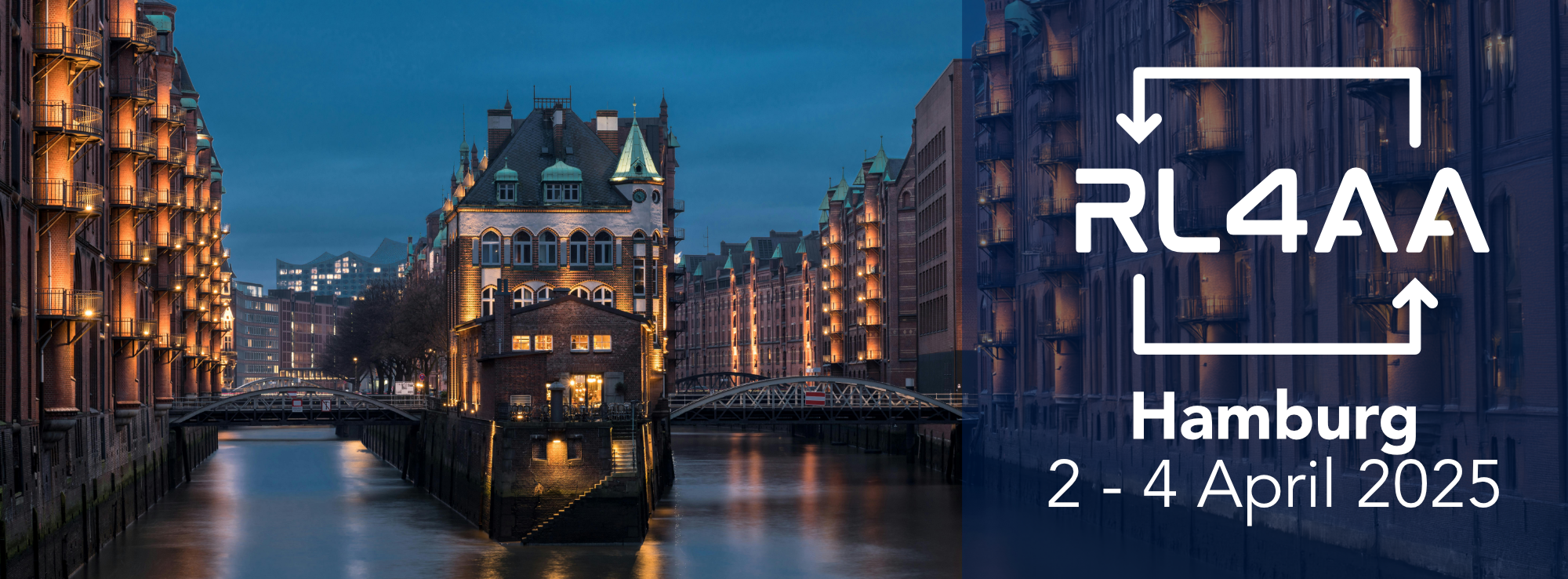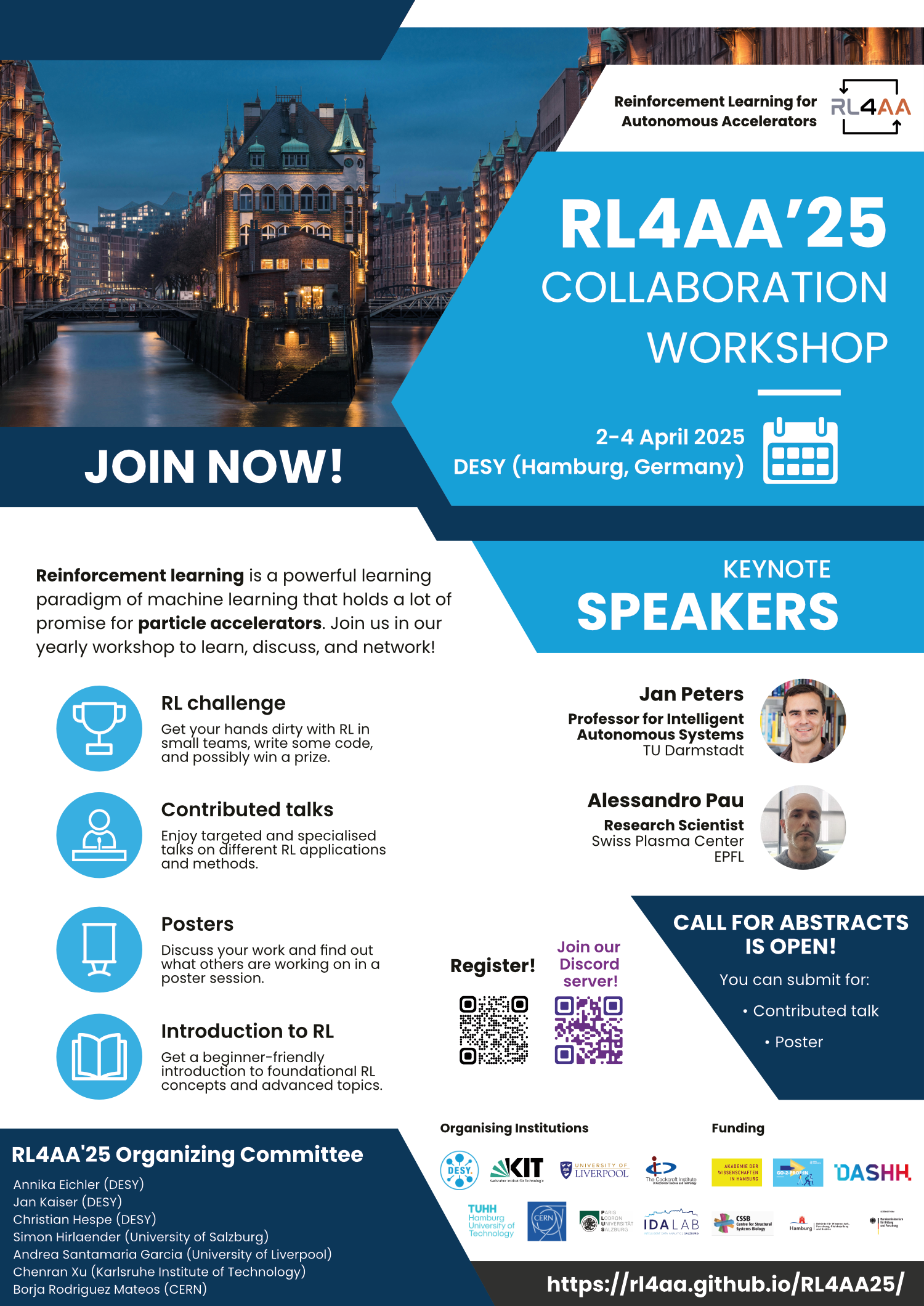- Indico style
- Indico style - inline minutes
- Indico style - numbered
- Indico style - numbered + minutes
- Indico Weeks View
3rd collaboration workshop on Reinforcement Learning for Autonomous Accelerators (RL4AA'25)
→
Europe/Berlin
CSSB Building 15 - Lecture Hall (DESY)
CSSB Building 15 - Lecture Hall
DESY
Notkestraße 85, 22607 Hamburg, Germany
, , , , , ,
Description

We are pleased to announce RL4AA'25, the third instalment of the workshop series organised by the Reinforcement Learning for Autonomous Accelerators (RL4AA) Collaboration. After two very successful workshops in 2023 and 2024 in Karlsruhe and Salzburg, we are excited to announce the next workshop for 2025. RL4AA'25 will be hosted by DESY in the beautiful port city of Hamburg, Germany.
The workshop will bring together experts from the fields of machine learning, accelerator physics, and high-performance computing to discuss the latest developments in the field of reinforcement learning for autonomous accelerators. The workshop will feature invited talks, contributed talks, and poster sessions, as well as a panel discussion on the future of autonomous accelerators.
RL4AA welcomes seasoned RL practitioners as well as newcomers. We are doing our best to make sure there is something for everyone, from introductory tutorials to advanced research talks.
Note also that this year’s workshop is organised in coordination with 5th ICFA Beam Dynamics Mini-Workshop on Machine Learning for Particle Accelerators (MaLAPA) workshop at CERN. Both workshops are organised such that you can attend them one after the other.
We are looking forward to welcoming you to Hamburg in 2025!

Contact
Participants
Aline Luxa
Amelia Pollard
Amir Tosson
Amna Majid
Andrea Santamaria Garcia
Annika Eichler
Arne Grünhagen
Auralee Edelen
Bindu Sharan
Borja Rodriguez Mateos
Chenran Xu
Christian Contreras Campana
Christopher Behrens
Evangelos Matzoukas
Evgeny Solodko
Eya Dammak
Francesco Tripaldi
Georg Schäfer
Gerhard Hejc
Hannes Voß
Henry Day-Hall
Ibon Bustinduy
Jan Kaiser
Jason St. John
Johan Leygonie
Jonathan Edelen
Juan Luis Muñoz
Kai Rossnagel
Konrad Altenmüller
Lata Sharan
Leander Grech
Malek Haj Tahar
Marco Bocchio
Mohammad Sule Maidawa
Nicholas Tedjosantoso
Penny Madysa
Randeer Pratap Gautam
Sabrina Pochaba
Sarah Casura
Sebastian Starke
Simon Hirlaender
- +46
